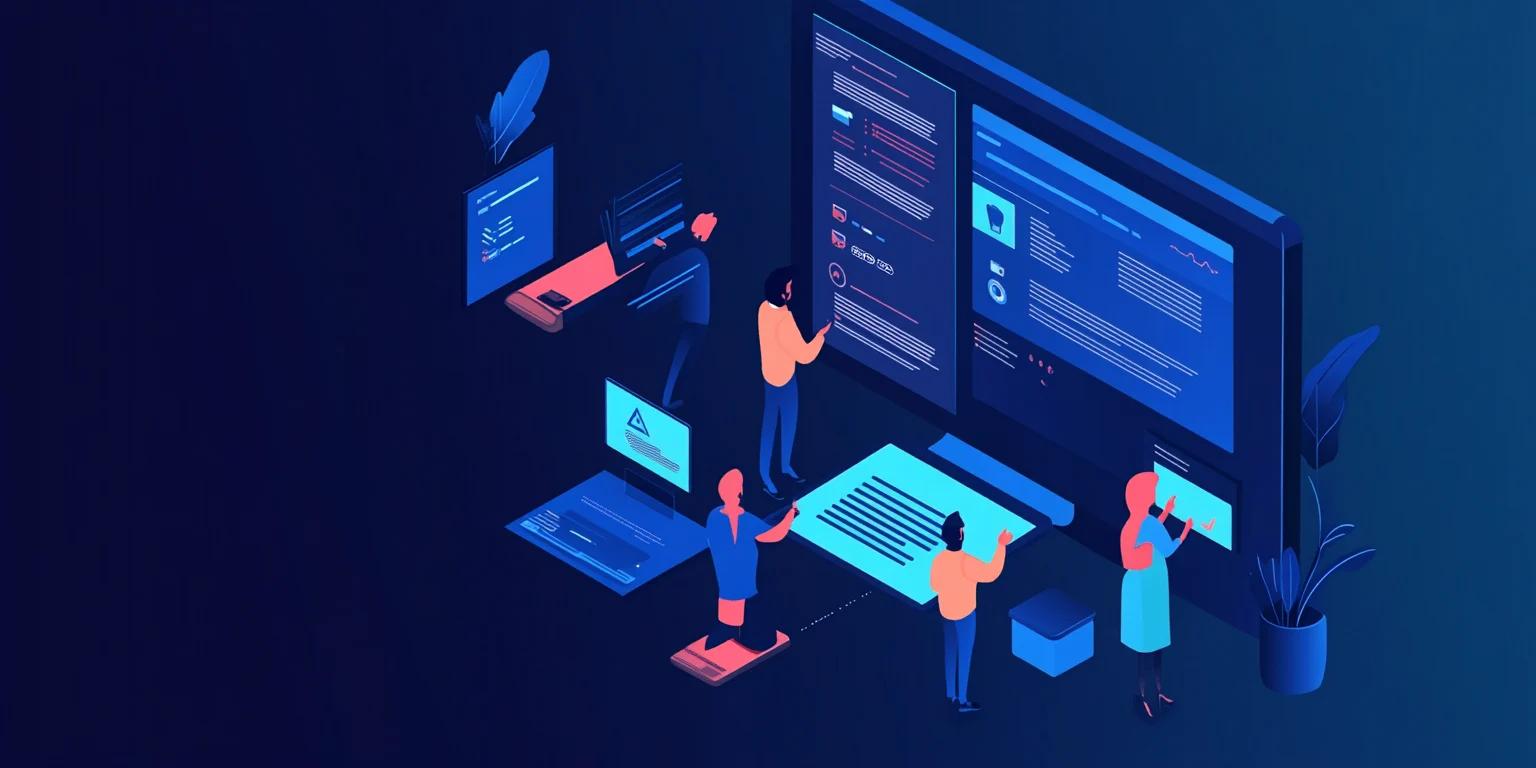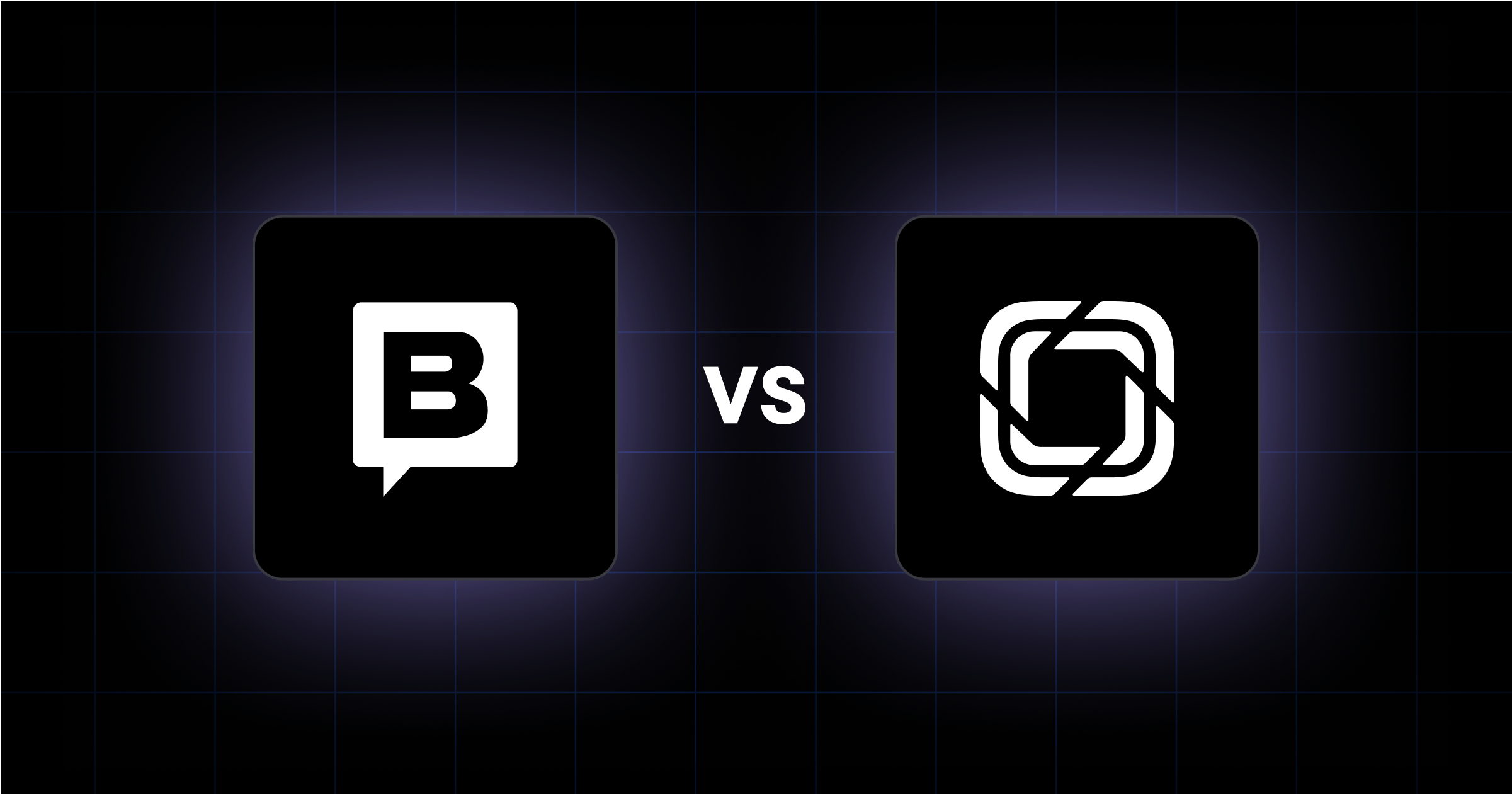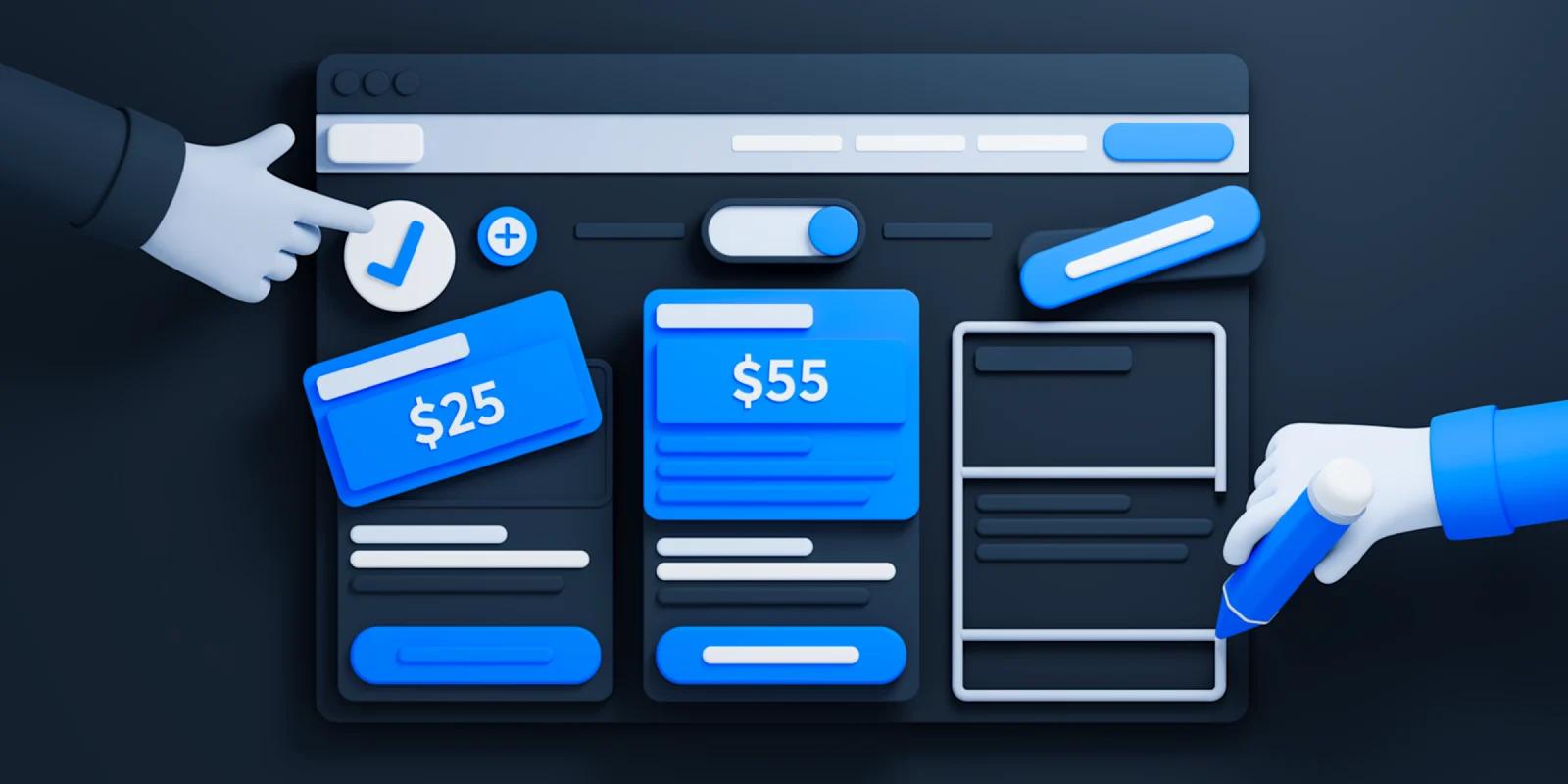A website development roadmap acts as your project's GPS, guiding it from the initial idea through post-launch refinement. This structured approach keeps your team aligned, reduces miscommunication, and helps manage deadlines and budgets effectively.
With clearly defined tasks and milestones, everyone understands their responsibilities and timelines. This clarity allows you to identify potential issues early and prevent costly delays.
In brief:
- A website development roadmap guides your project from planning to post-launch optimization.
- Clearly defined goals, target audience insights, and competitive analysis align your team and resources for effective collaboration.
- Focusing on user experience, architecture, and thorough testing leads to a successful launch.
- Ongoing analysis and updates keep your website relevant, secure, and aligned with business objectives.
Phase 1: Planning and Strategy
Before jumping into design and development, define your goals, understand your audience, and analyze your competition. A clear strategy helps your website meet business objectives and deliver a good user experience.
Define Your Website Goals
Your website should serve a clear purpose. Is it meant to generate leads, drive sales, build a community, or share content? Defining this early on helps guide design and content decisions. Your goals should also align with your broader business strategy. For example, if your company wants to increase inbound leads, your site should focus on conversion-optimized landing pages.
Setting measurable targets makes it easier to track progress. Instead of aiming to "increase web traffic," set a goal like "increase website visits by 20% in six months." Analytics tools like Google Analytics can help monitor performance and show whether your strategy is working.
Understand Your Audience
Knowing who will visit your site helps shape design, content, and functionality. Identify your target audience based on demographics, interests, and needs. Market research (through surveys, interviews, and analytics) can provide insights into user behavior and preferences.
It’s also helpful to analyze competitors. Look at their websites to see how they engage their audience, where they excel, and where they fall short. This can reveal opportunities to stand out, whether through better content, improved navigation, or stronger calls to action.
Set Key Performance Indicators (KPIs)
Tracking the right metrics helps measure success. Common KPIs include conversion rates, site traffic, and engagement levels. Choose metrics that align with your business goals and use analytics tools to monitor progress. If something isn’t working, adjust your approach based on the data.
Phase 2: Project Scoping and Requirements Gathering
A clear project scope keeps everything on track and prevents expensive surprises. This phase brings stakeholders together, clarifies requirements, and sets a realistic budget and timeline.
Define the Project Scope
Each team—executives, marketing, sales, and IT—has different priorities. Bringing them into the conversation early prevents last-minute changes. Document the must-haves, the nice-to-haves, and any long-term goals.
For complex projects, tools like requirement traceability matrices can help track dependencies and priorities. Keeping communication open makes it easier to spot potential roadblocks before they slow things down.
Choose the Right Tech Stack
Technology choices affect performance, security, and scalability. The right tools should integrate with existing systems and support future growth. Technical teams should weigh in on architecture and infrastructure, but business teams also need a say—especially if the site connects with CRMs, marketing platforms, or e-commerce tools.
Security and compliance requirements should factor into the decision, especially for enterprise companies handling sensitive data.
Create a Budget and Timeline
Website design costs go beyond development. Hosting, maintenance, security updates, and future improvements all need to be factored in. Breaking the project into phases helps manage expectations and keeps teams aligned. Gantt charts or project management tools provide visibility into timelines and responsibilities.
If multiple vendors are involved, extra time for approvals and integrations will help avoid delays. Checking progress against the original timeline throughout the project can highlight potential issues before they become major problems.
Assemble the Right Team
A strong team balances technical expertise with strategic thinking. Developers, UX designers, SEO specialists, and content strategists each play a role, but the most successful projects also have clear leadership. Collaboration between marketing, sales, and IT keeps the site aligned with business goals.
If the website will include advanced features like AI-driven personalization or complex data integrations, ongoing training may be necessary to keep teams up to speed.
Phase 3: Website Architecture and Content Strategy
A clear website structure makes it easier for visitors to navigate and helps search engines understand your content. This phase focuses on organizing pages, mapping out user flow, and planning content in a way that aligns with business goals and SEO best practices.
Create a Sitemap
A sitemap acts as a blueprint for your website, showing how pages connect and how users move through the site. Defining the hierarchy upfront helps prioritize key pages, streamline navigation, and improve the user journey.
For enterprise websites with complex structures, organizing content into logical categories prevents clutter and makes information easier to find. A well-structured sitemap also improves search engine indexing and increases the likelihood that important pages will rank highly.
Develop Wireframes
Wireframes outline page layouts and functionality without the distraction of design elements. Starting with simple, low-fidelity wireframes helps teams focus on structure and user experience before refining details. High-fidelity wireframes (which come in a later phase) add interactive elements and help visualize how users will interact with different sections.
Collaboration tools like Figma and Sketch make it easier to collect feedback and refine layouts before development begins.
Plan Your Content Strategy
Content should support business objectives and user needs. Aligning content with the sitemap and wireframes ensures that each page serves a clear purpose. Enterprise websites often require messaging tailored to multiple audiences, such as decision-makers, technical teams, and end users. A well-planned content strategy delivers the right information at the right time, guiding visitors toward action.
Focus on SEO
The way a site is structured affects its search rankings, and optimizing for SEO (especially technical SEO) from the start reduces the need for major fixes later.
Clean URL structures, properly formatted heading tags, and an internal linking strategy help search engines crawl and index content efficiently. Enterprise websites should also consider schema markup to enhance search visibility and improve how content appears in results.
Phase 4: Design and Prototyping
The way your website looks and functions shapes how people perceive your brand. A well-designed site builds trust, reinforces brand identity, and makes navigation effortless. This phase focuses on refining visuals, optimizing user experience, and ensuring accessibility before development begins.
Create High-Fidelity Mockups
High-fidelity mockups give a realistic preview of the final design, showcasing typography, color schemes, imagery, and layout. These mockups help stakeholders visualize the end product and provide feedback before development starts. Tools like Figma, Sketch, and Adobe XD streamline collaboration, and make it easier to iterate based on input from marketing, sales, and leadership teams.
Keeping up with design trends will help your site feel modern and meet user expectations. Features like minimalist layouts, bold typography, and AI-driven personalization are just a few of the trends that are currently shaping website design. Future-proofing your design now prevents the need for major overhauls later.
Focus on UX Design
A website should be easy to use and guide visitors to the information they need without friction. Strong UX design balances aesthetics with usability. This means that:
- Design choices should be based on actual user behavior and usability testing, not assumptions.
- A clear visual hierarchy helps users find key content quickly.
- Fonts, colors, and UI components should remain uniform across all pages.
- Hover effects, loading animations, and error messages provide real-time feedback, improving engagement.
Since most enterprise users access websites across multiple devices, mobile optimization should be a priority. Responsive design and touch-friendly navigation make interactions smooth on any screen size.
Incorporate Accessibility Best Practices
An inclusive website expands your audience and improves usability for everyone. Accessibility should be a core part of the design process, not an afterthought. Key considerations include:
- Responsive design: Pages should adjust seamlessly across different screen sizes and resolutions.
- Keyboard navigation: Users should be able to navigate without a mouse, ensuring access for those with motor impairments.
- Clear focus states and shortcuts: Highlight active elements so users understand where they are and what actions they can take.
- Compliance with WCAG 2.1 standards: Following accessibility guidelines ensures the website meets legal requirements and provides a better experience for all users.
Phase 5: Development and Integration
This phase transforms planning and design into a functional website.
Development involves building the front-end and back-end, integrating essential tools, and implementing security measures to protect data and user interactions. For B2B enterprises, scalability, performance, and security are of major importance, as these types of websites often handle large amounts of customer data and complex workflows.
Set Up the Development Environment
A structured development environment keeps the project organized and makes it easier to collaborate. Development teams should use:
- Version control – Git (with GitHub, GitLab, or Bitbucket) tracks changes, prevents data loss, and enables seamless teamwork.
- Code editors – VS Code, Sublime Text, or JetBrains IDEs provide tools to streamline coding.
- Local development servers – XAMPP, WAMP, or MAMP help simulate a production-like environment for testing.
- Task runners & build tools – Tools like Gulp or Webpack automate repetitive tasks, such as compiling CSS or optimizing assets.
- Environment configuration – .env files store API keys, database credentials, and other variables securely, and keep sensitive data out of the codebase.
Front-End Development
The front end is where users interact with the site, so speed, accessibility, and responsiveness should drive development. HTML, CSS, and JavaScript form the foundation, while modern frameworks like React, Vue.js, or Angular help build interactive, component-driven interfaces.
CSS preprocessors such as Sass and Less make styling more scalable, which is useful for enterprise websites with extensive design systems. Performance optimization techniques like lazy loading, asset minification, and caching improve site speed.
For businesses catering to multiple audience segments, the front end should support personalized experiences. A flexible UI framework can adapt to different user roles, whether they’re prospects, customers, or internal employees using a portal.
Back-End Development
The back end handles data processing, authentication, and server-side logic. Common programming languages for enterprise websites include Python (Django, Flask), PHP (Laravel), and Java (Spring). Node.js with Express is also a strong choice for API-driven applications. Databases like MySQL, PostgreSQL, and MongoDB store and manage data, while caching systems like Redis improve performance by reducing database queries.
Companies that process large volumes of customer data need to structure their APIs efficiently. A RESTful or GraphQL API connects front-end applications with back-end systems while maintaining fast response times. If the website is expected to scale, a microservices architecture or serverless approach (using AWS Lambda or Azure Functions) helps distribute workloads efficiently.
Integrate Third-Party Tools
Most enterprise websites need integrations to improve functionality and connect with existing business systems. Marketing teams rely on analytics tools like Google Analytics or Adobe Analytics to track performance. CRM platforms such as Salesforce and HubSpot sync lead data between the website and sales teams, while marketing automation tools like Marketo enable personalized outreach.
If the site includes e-commerce features, secure payment processing through Stripe, PayPal, or Braintree is necessary. Content management should also be flexible enough to allow different teams to update pages without developer involvement. A headless CMS like Contentful or Strapi allows you to distribute content across multiple platforms, and make it consistent across websites, apps, and other digital channels.
Implement Security Measures
When it comes to security, there are a couple of features to keep in mind. SSL/TLS encryption protects data in transit, while multi-factor authentication (MFA) and OAuth allow for secure user logins. Regular security audits, penetration testing, and vulnerability scans help catch weaknesses before they become threats.
To prevent cyberattacks, firewalls and DDoS protection services like Cloudflare or AWS Shield add an extra layer of defense. Data privacy regulations such as GDPR and CCPA require strict compliance, so businesses need to manage user consent and data retention policies carefully.
Phase 6: Testing and Quality Assurance
Thorough testing prevents technical issues, security vulnerabilities, and usability problems before the website goes live. A structured quality assurance process confirms that everything works as expected and meets compliance standards. This phase covers functional testing, performance evaluation, SEO and accessibility checks, security assessments, and user acceptance testing.
Conduct Functional Testing
Functional testing makes sure every part of the website works as expected, from individual features to the full system.
Developers start with unit testing, where they check small components—like buttons, forms, and navigation menus—to catch errors before they become bigger problems. Tools like Jest, Mocha, and Jasmine help automate this process.
Next comes integration testing, which looks at how different sections of the site interact. This step is especially important for enterprise websites that rely on multiple data sources, third-party APIs, or complex workflows.
System testing then takes a broader approach, evaluating the entire website to confirm that all features function correctly together. Since updates can sometimes break existing functionality, regression testing reruns previous test cases to catch any unintended issues. Automated tools like Selenium simulate real-world browsing scenarios, checking for bugs across different devices and browsers.
Skipping thorough functional testing can lead to frustrating user experiences, lost conversions, and costly fixes down the road, so this phase is needed if you want to launch a reliable, high-performing site.
Run Performance Tests
Performance testing helps prevent slow load times, crashes, and inconsistent user experiences by simulating real-world traffic. The first step is load testing, which checks how the website handles normal visitor numbers. A site might work perfectly during development but slow down when dozens or hundreds of users browse at the same time. If pages take too long to load, potential customers may leave before engaging with your business.
Beyond typical traffic, stress testing pushes the system past its limits to find breaking points. This helps uncover weaknesses before they cause real issues, like a checkout page failing under high demand or a database slowing down under a large number of simultaneous queries. Some problems don’t appear right away, which is where endurance testing comes in. Running the website under heavy traffic for long periods reveals slowdowns that develop over time, such as memory leaks or increasing server response times.
Not all traffic increases gradually—sometimes, a site experiences sudden surges, like when a marketing campaign drives a large number of visitors within minutes. Spike testing evaluates how well the system absorbs these bursts of activity without crashing or slowing to a crawl.
Tools like Apache JMeter, LoadRunner, and Gatling automate these simulations, and provide data on response times and areas that need improvement before launch.
Security Testing
A website that looks great and functions well still isn’t ready to launch if it isn’t secure. Cyber threats like SQL injection, cross-site scripting (XSS), and data breaches can expose sensitive information, damage a company’s reputation, and lead to financial losses.
Running vulnerability scans helps detect weak points in the system before hackers do. Automated tools can identify common security risks, while penetration testing goes a step further by simulating real-world attack scenarios to see how well the site holds up.
User Acceptance Testing (UAT)
Even after multiple rounds of technical testing, real users often notice issues that developers might miss. User acceptance testing (UAT) brings in actual customers, employees, or other stakeholders to interact with the website as they normally would. Their feedback provides insight into whether the site is intuitive, whether key actions like submitting forms or navigating to important pages feel natural, and whether anything feels frustrating or confusing.
For B2B websites, different user roles may have different needs. Decision-makers might prioritize easy access to product information, while IT teams may focus on integrations and technical documentation. Running UAT with a diverse group of testers helps identify gaps that could impact the website’s effectiveness. If users struggle with any part of the experience, this is the final opportunity to make adjustments before launch. Addressing these last-minute refinements makes the website stronger and more aligned with business goals.
Phase 7: Launch and Deployment
After months of work, it’s finally time to launch the website. But before making it public, everything needs a final check. A rushed launch can lead to broken links, slow load times, or security gaps that could have been avoided. Taking the time to review every detail makes the transition smoother and prevents frustrating issues later:
- Test functionality on all devices and browsers. Features that work perfectly on one browser may break on another. Run tests on different screen sizes to catch any layout issues.
- Make sure SEO is in place. Meta tags, title tags, and descriptions should be optimized. Check for broken links, submit sitemaps to search engines, and confirm that redirects work properly.
- Review all content. Proofread everything. Check for typos, missing images, or outdated information. Small details can make a big difference in credibility.
- Run a security check. Scan for vulnerabilities, apply any last-minute security patches, and make sure SSL certificates are correctly installed.
- Back everything up. Save copies of the website code, database, and content in a secure location. If anything goes wrong, restoring a backup is much easier than scrambling to fix a live issue.
- Confirm the domain setup. The website should be pointing to the correct hosting environment, and caching or CDN settings should be ready for production.
Running through this checklist helps avoid unnecessary stress on launch day. Once everything looks good, it’s time to make the site live.
Go Live
Going live is a process that needs coordination. If the website has a lot of moving parts, launching during a low-traffic period gives the team time to handle any surprises.
- Stick to the launch plan. Everyone involved (developers, marketers, and IT) should know their role. The more organized the launch, the fewer last-minute problems.
- Move from staging to production. This step takes the website from the testing environment to the live server. If a CDN or caching system is in place, old versions should be cleared to avoid showing outdated content.
- Check domain propagation. It can take a few hours for the website to appear everywhere. Testing from different locations confirms that the site is accessible to users across regions.
Once the site is live, the focus shifts from launching to monitoring how it performs in real-time.
Monitor Real-Time Analytics
The first few days after launch are very important. Even with thorough testing, real users will interact with the site in ways developers didn’t anticipate. Watching key metrics closely helps catch and fix any problems early.
- Track user behavior. Tools like Google Analytics or Adobe Analytics show where visitors are coming from, what they’re clicking on, and if they’re leaving too soon. If users drop off at a specific point, there may be an issue with navigation or content clarity.
- Watch performance metrics. Slow load times frustrate users and hurt search rankings. Monitoring uptime, page speed, and server response times with tools like GTmetrix and Pingdom helps keep the site running smoothly.
- Look out for errors. Error tracking tools like Sentry or LogRocket flag technical issues that may not be immediately obvious. Fixing small bugs early prevents bigger problems down the line.
- Listen to user feedback. Real users often notice things that internal teams miss. Encouraging feedback through surveys or support channels provides valuable insight into what’s working and what needs improvement.
Use a Website Development Roadmap for Long-Term Success
Building a website is about creating something that grows with your business. A roadmap keeps things organized, helps teams stay aligned, and makes sure every step supports your goals. It also helps catch potential issues early, whether it’s a design flaw, a missing feature, or a gap in content.
But no website stays the same forever. As your business evolves, so will your site. User feedback, new technology, and shifting priorities will influence future updates. One big shift many businesses are making is moving to a headless CMS, which offers more flexibility and better scalability. If you’re considering that move, knowing what to expect can make the transition much easier.
To help with that process, we’ve put together the headless CMS implementation checklist—a step-by-step guide to making the switch smoothly.




